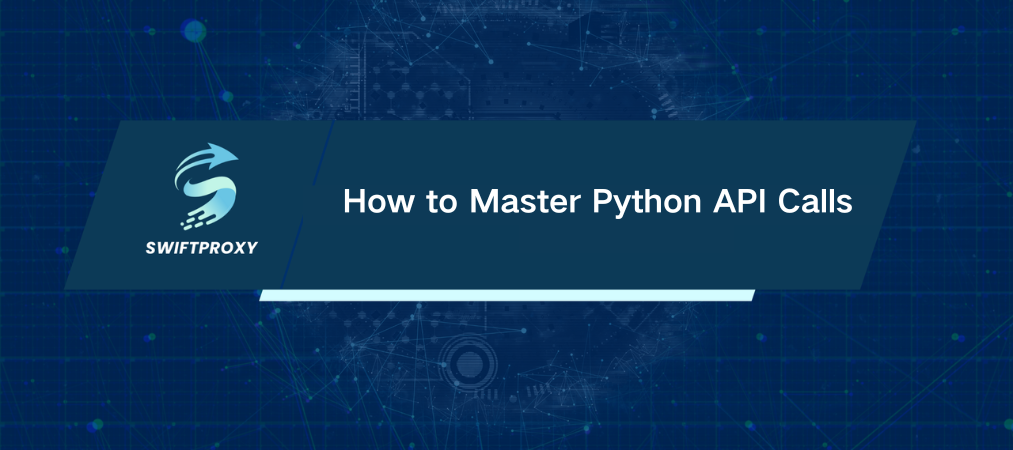How to Master Python API Calls

APIs are the glue holding today's software together, and in 2025, that glue is stronger than ever. If you want your Python projects to thrive, mastering API calls is non-negotiable. The ability to connect your code seamlessly with external services isn't just a nice-to-have—it's a superpower.
Let's dive deep. We'll show you how to handle Python API calls like a pro in 2025, with practical tips, cutting-edge tools, and security best practices. Ready? Let's go.
What Exactly Are API Calls
APIs (Application Programming Interfaces) let different software talk to each other. Think of them as the messengers delivering requests and bringing back data. In Python, your best friends for this job are libraries like requests and urllib.
Making an API call means sending a request to a web service and getting data back—usually in JSON or XML. Simple, right? Yet mastering the details makes all the difference.
Get Your Python Environment Ready
Before you write a single line of code, make sure your environment is set up right:
Python Version: Use the latest stable release—Python keeps getting faster and smarter.
Virtual Environments: Never mix project dependencies. Use venv or conda to isolate your projects. It saves headaches later.
Install the Right Tools
For 2025, your toolkit includes:
requests — Still the go-to for HTTP calls.
httpx — Async and sync support, gaining popularity.
urllib3 — Low-level, powerful, but needs more care.
Use pip like this:
pip install requests httpx
Check if the API provider offers an official Python SDK — it can save tons of time.
Making GET Requests
GET requests are your bread and butter for pulling data. Here's a quick example:
import requests
response = requests.get('https://example.com/data')
if response.status_code == 200:
data = response.json()
print(data)
else:
print(f"Error: {response.status_code}")
Make it a habit to verify the status code before handling the response and avoid assuming it was successful.
Managing Data Sending via POST Requests
Need to create or update resources? POST is your weapon of choice.
Here's a sample snippet:
payload = {'name': 'Lewis', 'role': 'Developer'}
response = requests.post('https://example.com/users', json=payload)
if response.ok:
print('User created successfully.')
else:
print(f"Failed with status {response.status_code}")
Remember to match the API's expected data format and headers exactly. Even a tiny mistake can break the request.
Secure Authentication
Security isn't optional. It's mission-critical.
Common approaches today:
API Keys: Simple, but don't hard-code them. Use environment variables.
OAuth2: Industry standard for secure, token-based access.
JWT Tokens: Lightweight, stateless auth tokens.
Use the python-dotenv package to manage secrets in .env files. Your future self will thank you.
Handle Rate Limits Like a Pro
API providers throttle usage to keep services stable. If you hit the limits, your calls can get blocked.
Your Python code should:
Detect rate-limit headers (e.g., X-RateLimit-Remaining).
Back off gracefully — wait before retrying.
Use exponential backoff strategies.
Here's a simple retry pattern using time.sleep():
import time
for attempt in range(5):
response = requests.get('https://example.com/data')
if response.status_code == 429: # Too Many Requests
wait = 2 ** attempt
print(f"Rate limited. Retrying in {wait} seconds...")
time.sleep(wait)
else:
break
Logging and Monitoring
Never fly blind. Log everything relevant:
Request URLs and payloads (without exposing sensitive info).
Response codes and data snippets.
Errors and exceptions.
Python's built-in logging module is powerful and customizable:
import logging
logging.basicConfig(level=logging.INFO)
logging.info("API call successful")
logging.error("Failed to retrieve data")
Implement Robust Error Handling
Networks fail. Servers go down. Your code should anticipate these issues and respond smoothly.
Use try-except blocks around API calls.
Differentiate between transient errors (retry) and fatal ones (fail fast).
Provide meaningful messages for debugging.
What's Next in Python API Integration
APIs are evolving. Keep an eye on:
GraphQL: Fetch exactly the data you need — no more, no less.
Async APIs: Handle high throughput with asyncio and httpx.
AI-Powered Automation: Use machine learning to predict API usage patterns or auto-heal integrations.
Stay curious. Adapt fast.
Final Thoughts
Mastering Python API calls in 2025 goes far beyond just memorizing syntax. It's about combining strong core principles with smart practices in automation, security, and resilience. When you get this right, your projects become stronger, more scalable, and ready for whatever comes next. So dive in—experiment, build boldly, and explore the full potential of what APIs can do.

















































